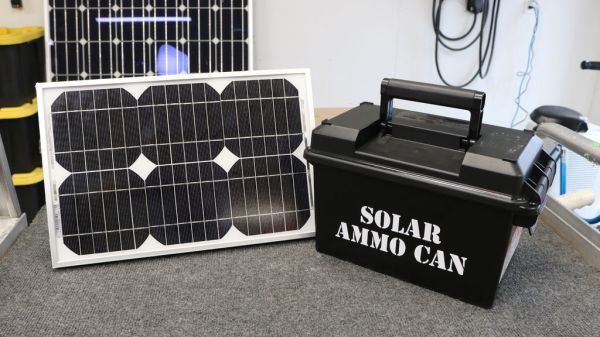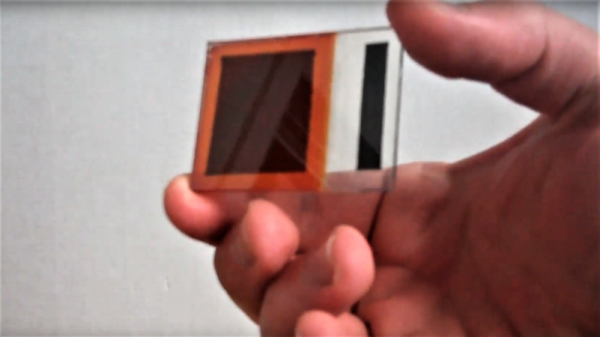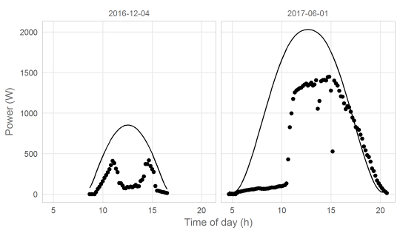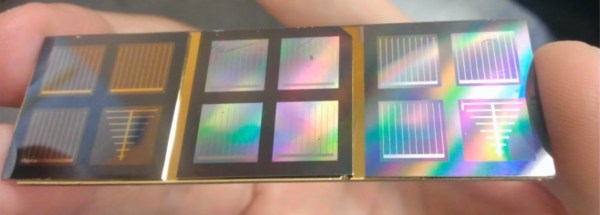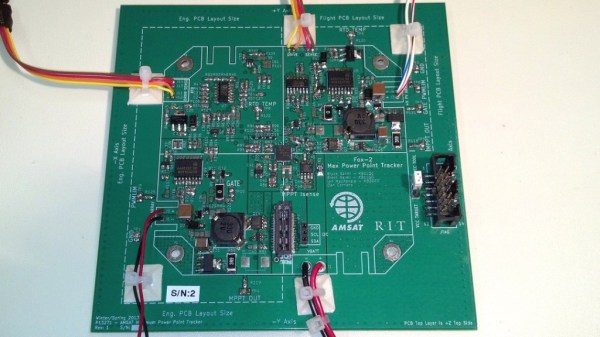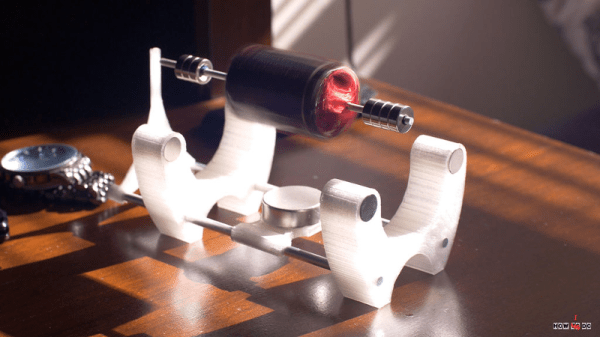When spending time camping, people often bring lanterns, flashlights, and the like — you might even bring along a solar charger. Instructables user [bennelson] is combining all your electrical powered needs by cramming solar power into a can.
Already designed to resist the elements, [bennelson] is using a 50cal. ammo can for a portable enclosure. Inside, he’s siliconed a 15AH, 12V lead-acid battery in the centre to maintain balance and to leave room for the wiring and storage. One cardboard mockup later, he laser-cut the top panel from 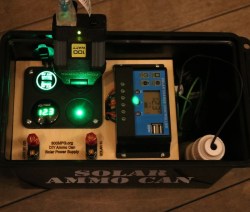 1/8″ plywood and secured a 20A solar charge controller, a four-in-one socket panel, and two banana plugs on its top face.
1/8″ plywood and secured a 20A solar charge controller, a four-in-one socket panel, and two banana plugs on its top face.
[bennelson] is using 12 AWG wire to match the 20A rating of the solar charge controller — including a fuse for safety — and lever lock-nut connectors to resolve some wiring complications. Industrial velcro keeps the top panel in place and easily removed should the need arise. When he’s out camping, he uses an 18V, 1A solar panel to charge, but can still use a DC power adapter to charge from the grid. Check out the full build video after the break!

